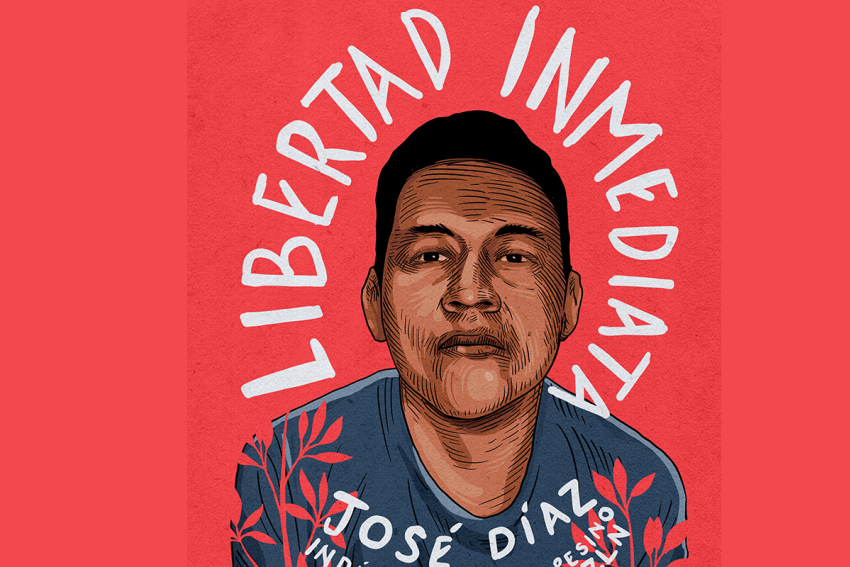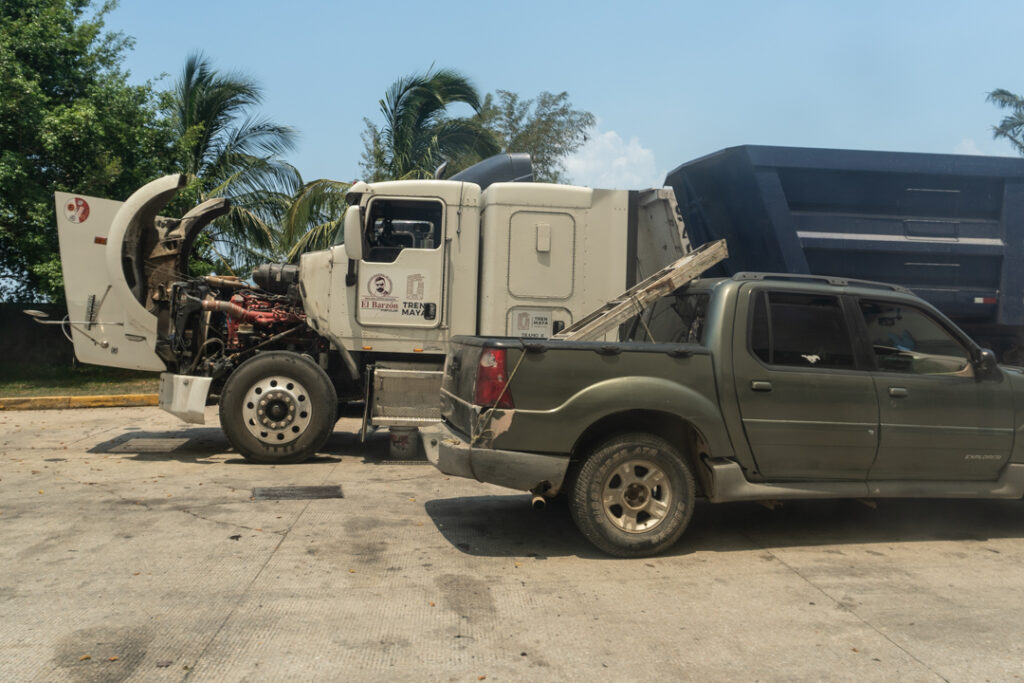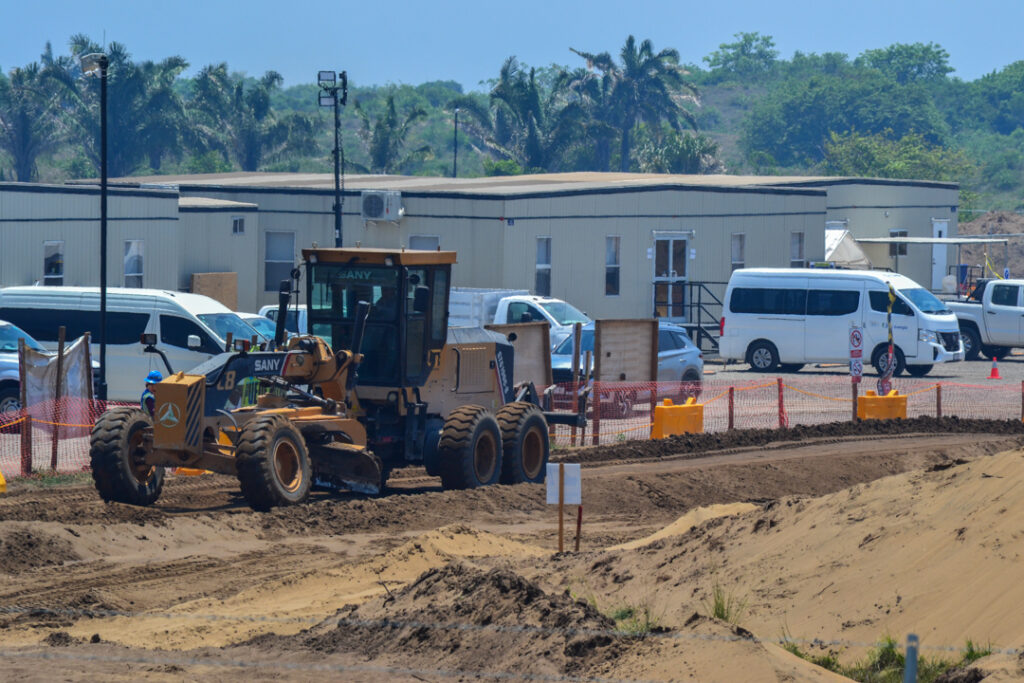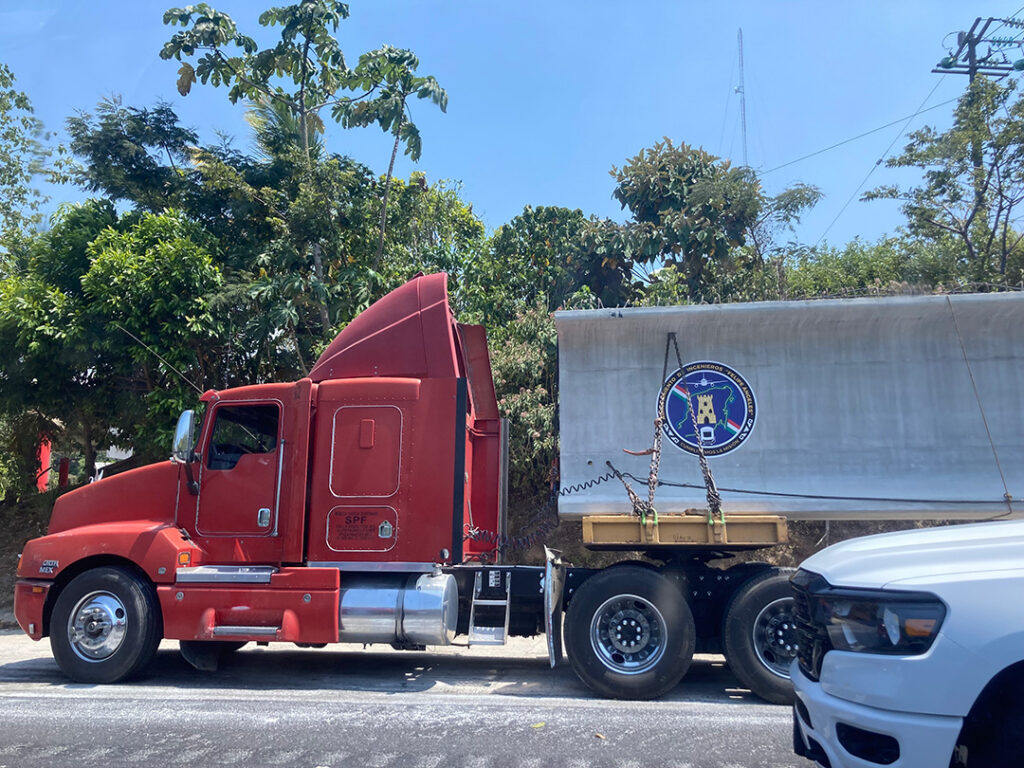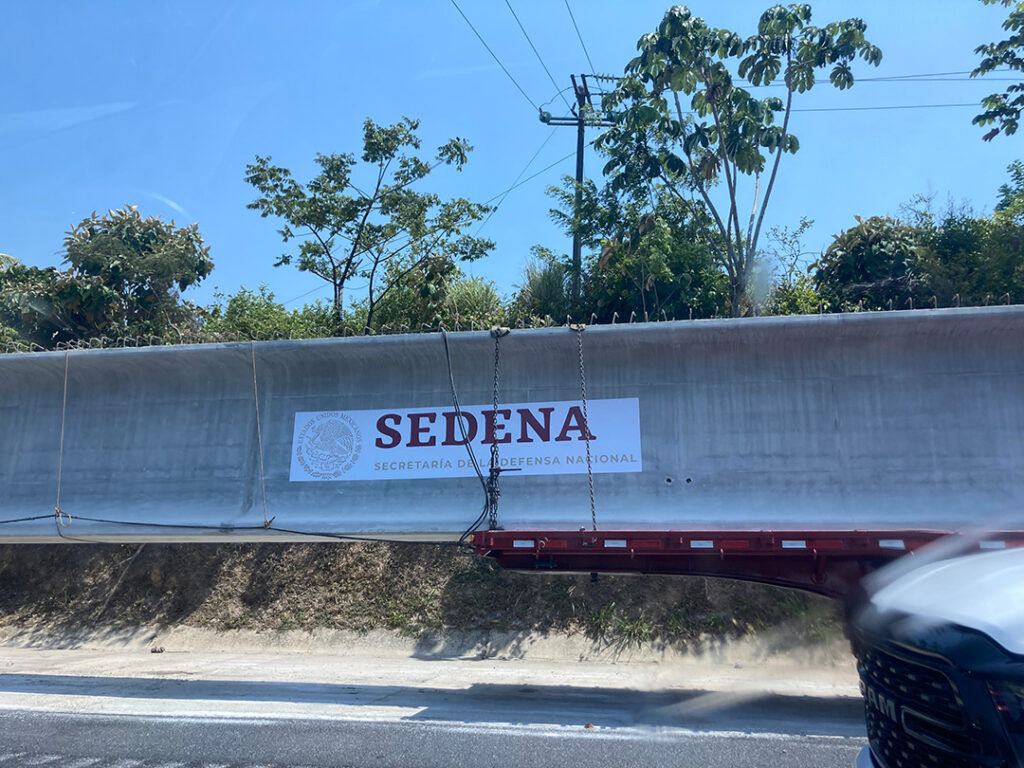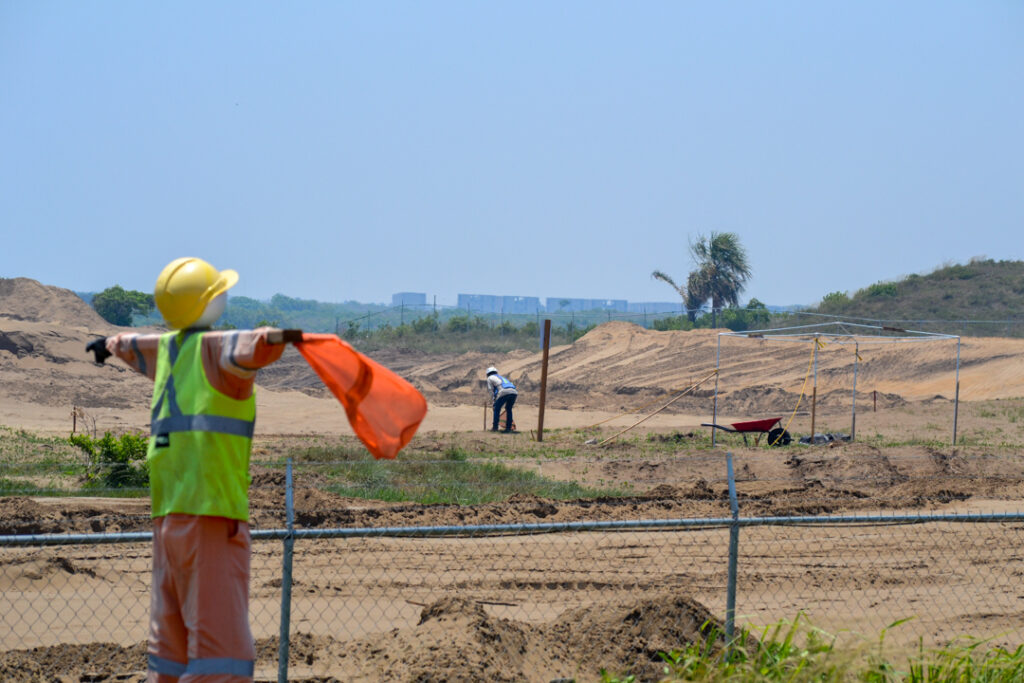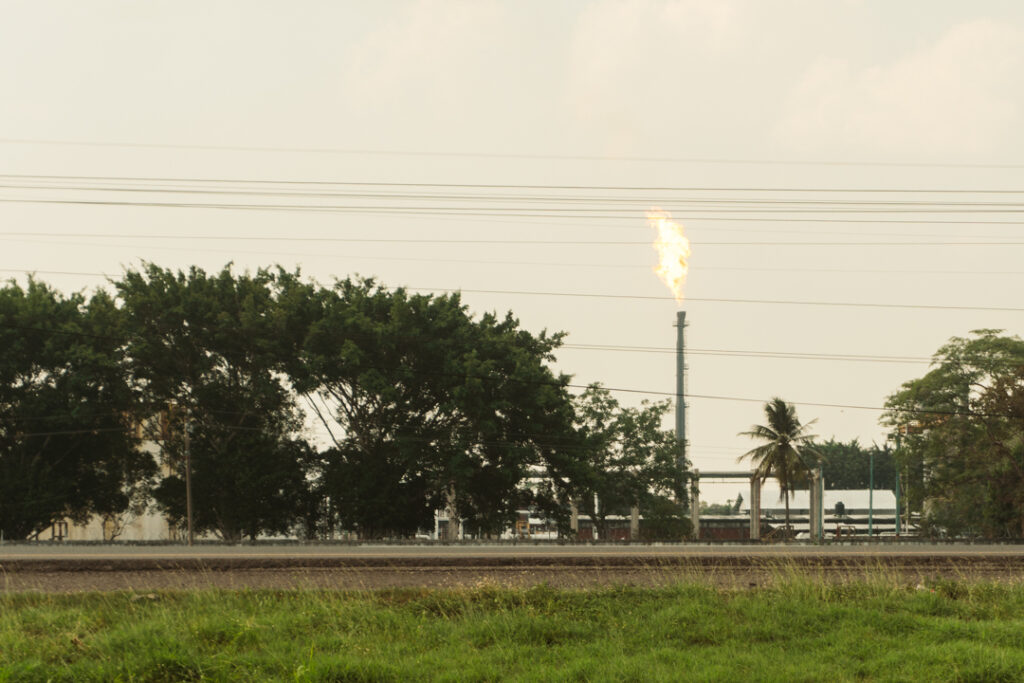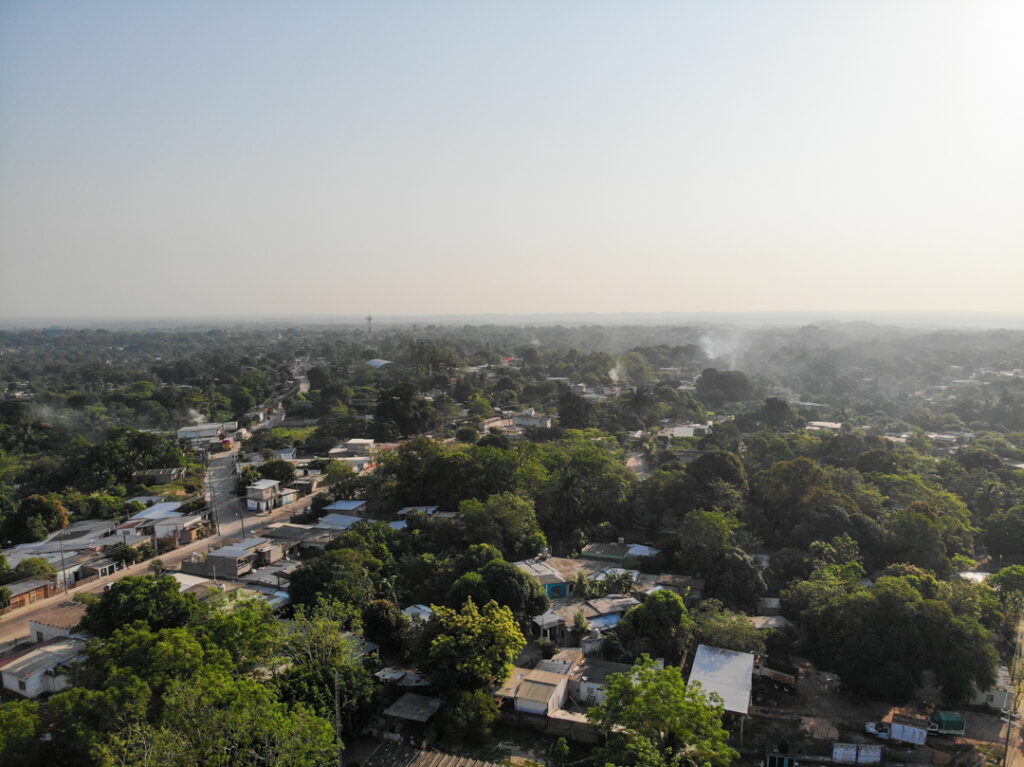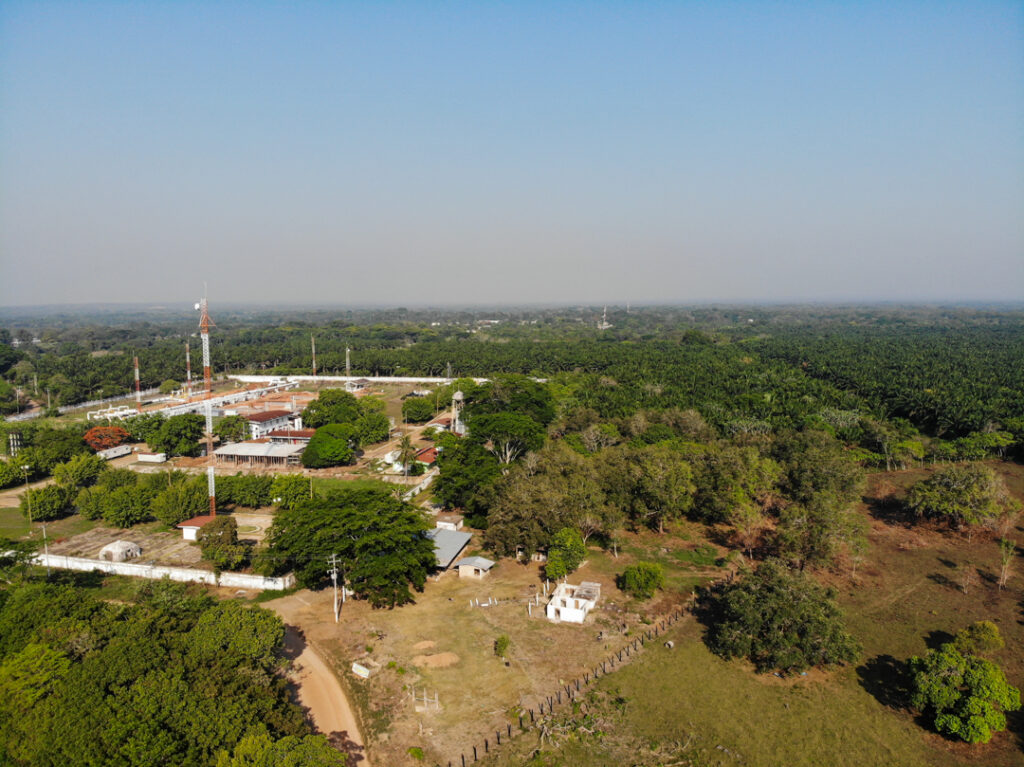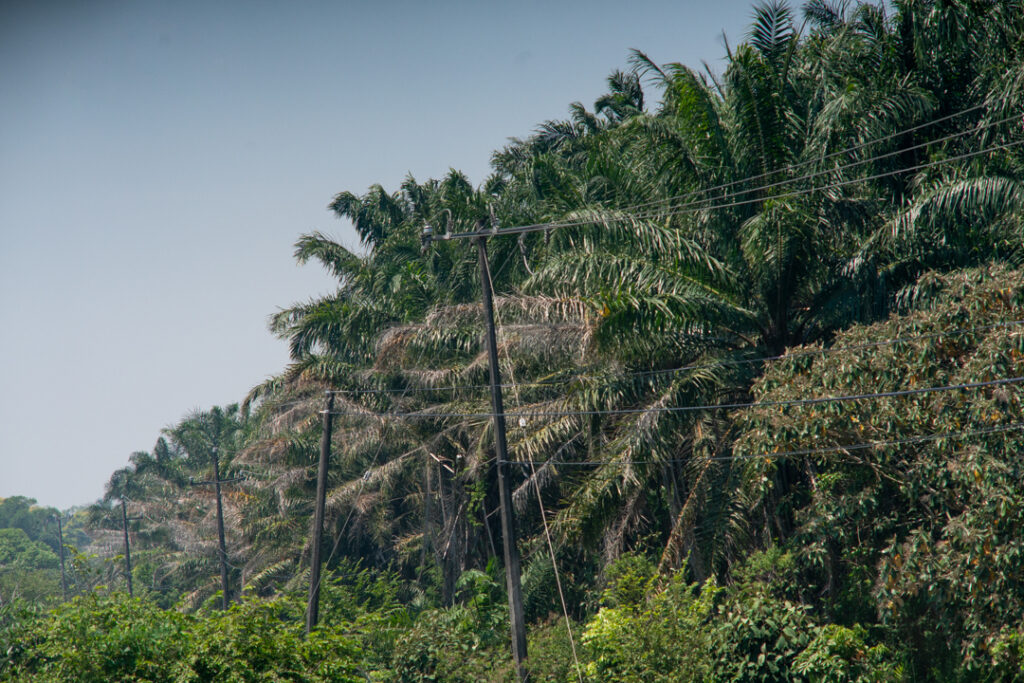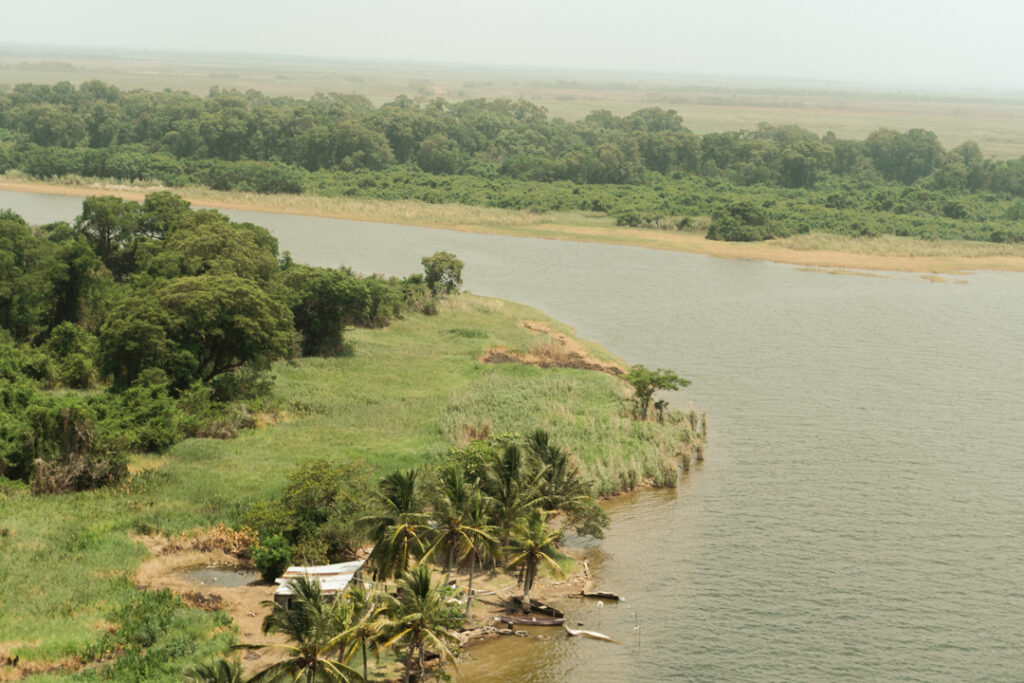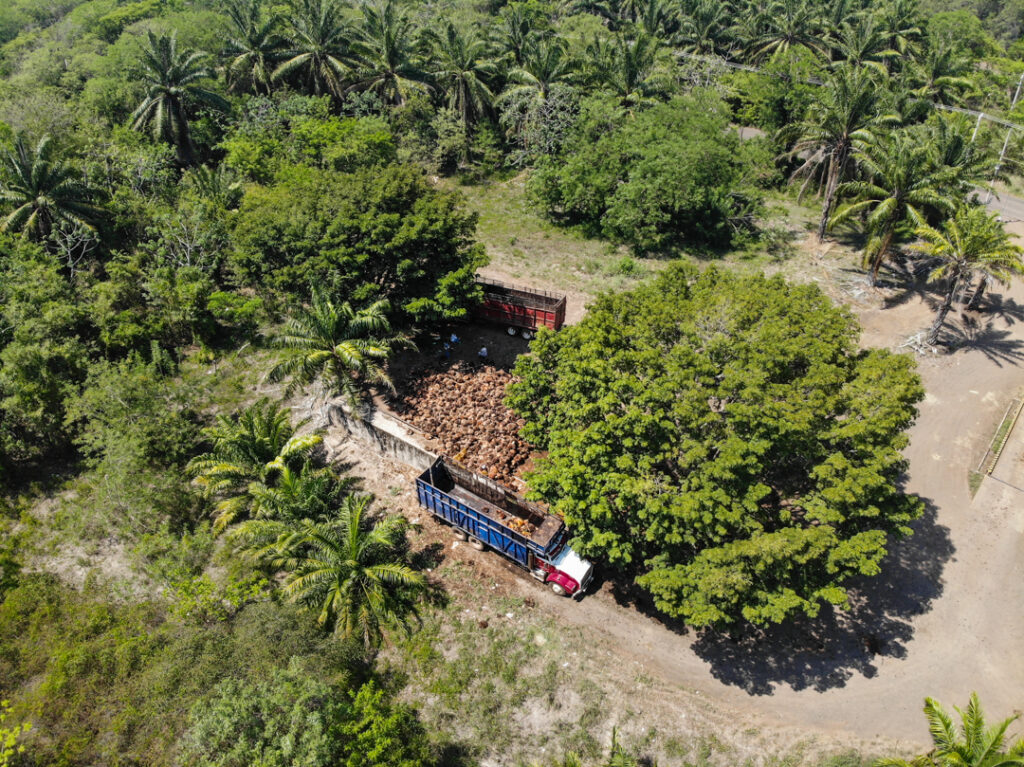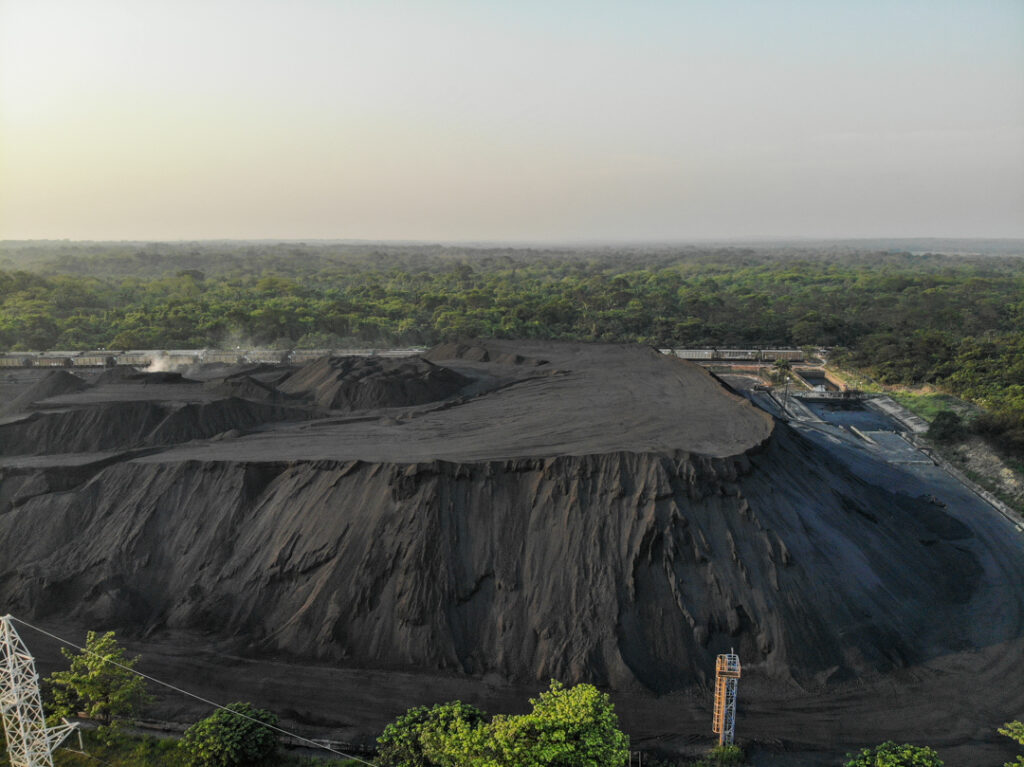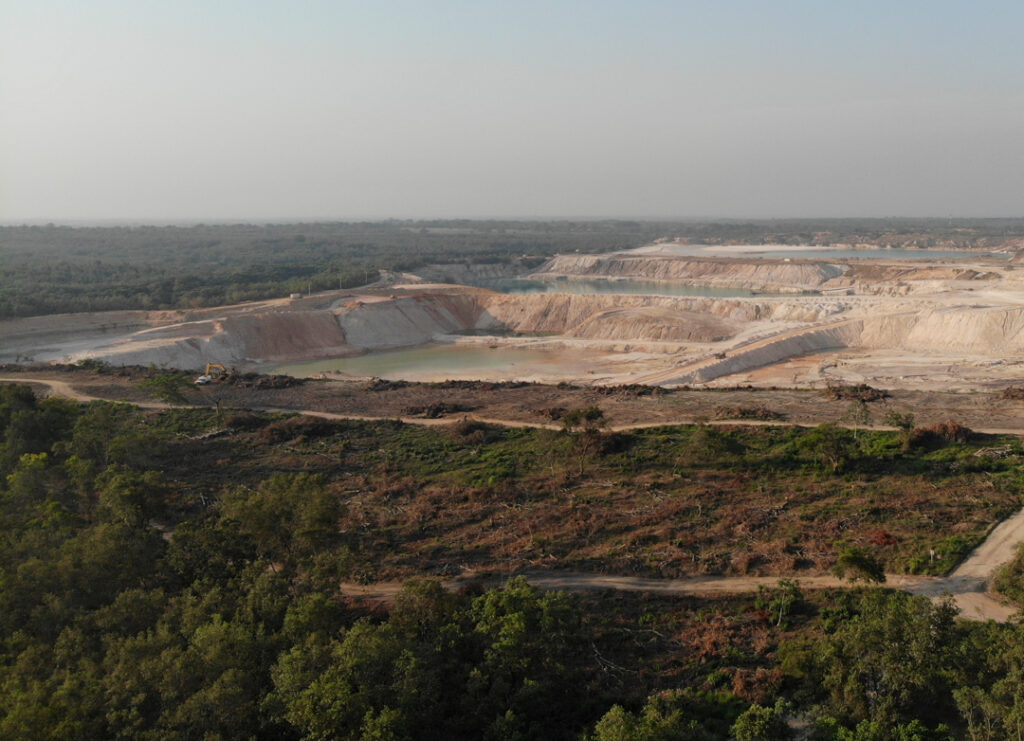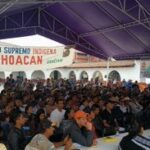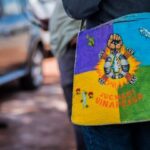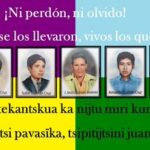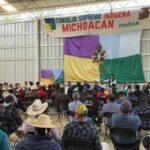Fourteenth Part and Second Approach Alert:
The (other) Rule of the Excluded Third
November 2023
The meeting was a year ago. One early morning in November. It was cold. Subcommander Insurgent Moisés arrived at the Captaincy chamber (yes, you are not wrong, by that time SupGaleano had already died, only his death had not been made public). The meeting with the bosses had ended late, and the SubMoy took time to stop by and ask me about what I had progressed in the analysis that had to be presented the next day at the assembly. The moon was moving lazily towards its first quarter and the world population reached 8 billion. Three notes appeared in my notebook:
The richest man in Mexico, Carlos Slim, to a group of students: “now, what I see for all of you is a buoyant Mexico with sustained growth, with many opportunities for job creation and economic activities” (November 10, 2022). (Note: perhaps he refers to Organized Crime as an economic activity that generates employment. And with export goods).
“(…) the number of people who are currently reported missing in Mexico, since 1964, now amounts to 107,201; that is, 7 thousand more than last May, when the 100 thousand threshold was exceeded. (November 7, 2022). (Note: Seek for the seekers).
In Israel, the UN set the number of Palestinian prisoners at around 5,000, including 160 children, according to the report by the Special Rapporteur on the situation of human rights in the Palestinian territory occupied since 1967. Netanyahu takes over as head of the government for the third time. (November 2022). (Note: he who sows winds will reap storms).
-*-
A crack as a project.
It was not the first time we had discussed the topic. What’s more, during the last few moons it had been the constant: the diagnosis that would help the assembly make a decision about “what’s next.” They had also been discussing this for months, but the idea-proposal of Subcommander Insurgent Moisés had not landed jet, or materialized. It was still a kind of intuition.
«It’s not that all the doors are closed,» I began. – There are no doors. All those that appear as “true” do not lead anywhere other than to the starting point. Any attempted route is just a trip through a labyrinth that, at best, takes you back to the beginning. At worst, to disappearance.
So? SubMoy asked, lighting the umpteenth cigarette.
-Well, I think you’re right, all that remains is to open a crack. It’s not good to look elsewhere. You have to make a door. It’s going to take time, yes. And it’s going to cost a lot. But yes, it is possible. Although not just anyone. What you are thinking, no one, ever. I myself didn’t think I would get even to hear it – I pointed out.
SubMoy remained thoughtful for a while, looking at the floor of the champa, full of cigarette butts, tobacco residue from the pipe, a burnt match, wet mud, some broken twigs.
Then he got up and, heading to the door, he only said: «Well, there’s no way, we need to see… what’s missing is yet to come.»
-*-
Failure as a goal.
To understand what that brief dialogue meant, I must explain a part of my job as captain. In this case, a work that I inherited from the late SupGaleano, who in turn received it from the late SupMarcos.
A thankless, dark and painful task: foreseeing the Zapatista failure.
If you are considering an initiative, I look for everything that could make it fail, or, at least, reduce its impact. Look for the contradictory opposite. Let’s say something like “Marcos Contreras”. I am, therefore, the maximum and only representative of the “pessimistic wing” of Zapatismo.
The objective is to attack the initiatives with all types of objections from the moment they begin to be born. We suppose that this causes this proposal to be refined and consolidated, whether it be an internal organizational, or an external initiative, be it a combination of these two.
To put it clearly: Zapatismo prepares itself to fail. That is, it imagines the worst-case scenario. With that horizon in perspective, plans are drawn up and proposals detailed.
To conceive these “future failures”, the sciences that we have at our disposal are used. You have to look everywhere (and when I say “everywhere” I mean everywhere, including social networks and their bot farms, fake news and the tricks that are carried out to get “followers”), obtain the greatest amount of data and information, cross it and thus obtain the diagnosis of what the perfect storm would be and its result.
You must try to understand that it is not about building a certainty, but rather a terrible hypothesis. In terms of the deceased: “suppose everything goes to shit.” Contrary to what one may believe, this catastrophe does not include our disappearance, but something worse: the extinction of the human species. Well, at least as we conceive it today.
This catastrophe is imagined and we begin to look for data that confirms it. Real data, not the prophecies of Nostradamus or the biblical Apocalypse or equivalent. That is, scientific data. Scientific publications, financial data, trends, records of facts, and many publications are then used.
From this hypothetical future, the clock is set in reverse.
-*-
The rule of the excluded third.
Already in possession of the drawing of the collapse and its inevitability, the rule of the excluded third begins to work.
No, it is not the known one. This is an invention of the late SupMarcos. In his time as a lieutenant, he said that, in the event of a failure, a solution was first attempted; second, a correction; and third, since there was no third, it remained as “there is no remedy.” Later, he refined that rule until he reached the one that I now explain to you: if a hypothesis is supported by true data and scientific analysis, it is necessary to look for two elements that contradict the aforementioned hypothesis in its essence. If these two elements are found, the third is no longer sought, then the hypothesis must be reconsidered or confronted with the most severe judge: reality.
I clarify that, when the Zapatistas say “reality,” they include their actions in that reality. What you call “practice”.
I then apply that same rule. If I find at least 2 elements that contradict my hypothesis, then I abandon the search, discard that hypothesis and look for another one.
The complex hypothesis.
My hypothesis is: there is no solution.
Notes:
Balanced coexistence between humans and nature is now impossible. In the confrontation, the one who has the most time will win: nature. Capital has turned the relationship with nature into a confrontation, a war of plunder and destruction. The objective of this war is the annihilation of the opponent, nature in this case (humanity included). With the criterion of “planned obsolescence” (or “expected expiration”), the commodity “human beings” expires in each war.
The logic of capital is that of greater profit at maximum speed. This causes the system to become a gigantic waste machine, including human beings. In the storm, social relations are disrupted and unproductive capital throws millions into unemployment and, from there, into “alternative employment” in crime, and into migration. The destruction of territories includes depopulation. The “phenomenon” of migration is not the prelude to the catastrophe, it is its confirmation. Migration produces the effect of “nations within nations”, large migratory caravans colliding with walls made of concrete, of police, military walls; criminal walls, bureaucratic walls, racial and economic walls.
When we talk about migration, we forget the other migration that precedes it on the calendar. That of original populations in their own territories, now converted into merchandises. Have the Palestinian people not become migrants who must be expelled from their own land? Doesn’t the same thing happen with the indigenous peoples around the world?
In Mexico, for example, the native communities are the “strange enemy” that dares to “desecrate” the soil of the system’s farm, located between the Bravo and the Suchiate. To combat this “enemy” there are thousands of soldiers and police, megaprojects, buying of consciences, repression, disappearances, murders and a veritable factory of guilty people (cf. https://frayba.org.mx/). The murders of brother Samir Flores Soberanes and dozens of nature guardians define the current governmental project.
The “fear of the other” reaches levels of frank paranoia. Scarcity, poverty, misfortunes and crime are responsible for a system, but now the blame is transferred to the migrant who must be fought until annihilated.
In “politics” alternatives and offers are offered, each one falser than the next. New cults, nationalisms – new, old or recycled -, the new religion of social networks and its neo prophets: the “influencers”. And war, always war.
The crisis of politics is the crisis of alternatives to chaos. The frenetic succession in governments of right wing, extreme right wing, the non-existent center, and what is presumptuously called «left», is only a reflection of a changing market: if there are new models of cell phones, why not «new” political options?
Nation-States become customs agents of capital. There are no governments, there is only one Border Patrol with different colors and different flags. The dispute between the “Fat State” and the “Starving State” is just a failed concealment of its original nature: repression.
Capital begins to replace neoliberalism as a theoretical-ideological alibi, with its logical consequence: neo-Malthusianism. That is, the war of annihilation of large populations to achieve the well-being of modern society. War is not an irregularity of the machine, it is the “regular maintenance” that will ensure its operation and duration. The radical reduction in demand to compensate for supply limitations.
It would not be about social neo-Darwinism (the strong and rich become stronger and richer, and the weak and poor become weaker and poorer), or Eugenics, which was one of the ideological alibis for the Nazi war of extermination of the Jewish people. Or not only. It would be a global campaign to annihilate the majority population of the world: the dispossessed. Dispossess them of life too. If the planet’s resources are not sufficient and there is no spare planet (or it has not been found yet, although they are working on it), then it is necessary to drastically reduce the population. Shrink the planet through depopulation and reorganization, not only of certain territories, but of the entire world. A Nakba for the entire planet.
If the house can no longer be expanded nor is it feasible to add more floors; if the inhabitants of the basement want to go up to the ground floor, raid the cupboard, and, horror!, they do not stop reproducing; if “ecological paradises” or “self-sustaining” (in reality they are just “panic rooms” of capital) are not enough; if those on the first floor want the rooms on the second and so on; in short, if “modern civilization” and its core (private ownership of the means of production, circulation and consumption), is in danger; well, then you have to expel tenants – starting with those in the basement – until “balance” is achieved.
If the planet is depleted of resources and territories, a kind of «diet» follows to reduce the obesity of the planet. Searching for another planet is having unforeseen difficulties. A space race is foreseeable, but its success is still a very big unknown. Wars, on the other hand, have demonstrated their “effectiveness.”
The conquest of territories brought the exponential growth of the «surplus», «excluded», or «expendable». The wars over distribution continue. Wars have a double advantage: they revive war production and its subsidiaries, and eliminate those surpluses in an expeditious and irremediable manner.
Nationalisms will not only re-emerge or have new breath (hence the coming and going of far-right political offers), they are the necessary spiritual basis for wars. “The person responsible for your shortcomings is whoever is next to you. That’s why your team loses.» The logic of the “cliques”, “gangs” and “hooligans” -national, racial, religious, political, ideological, gender-, encouraging medium, large and small wars in size, but with the same objective of purification.
Ergo: capitalism does not expire, it only transforms.
The Nation-State long ago stopped fulfilling its function as a territory-government-population with common characteristics (language, currency, legal system, culture, etc.). National States are now the military positions of a single army, that of the capital cartel. In the current global crime system, governments are the “Jefes de plaza” that maintain control of a territory. The political fight, electoral or not, is to see who is promoted to head of the plaza. The “cobro de piso” is through taxes and budgets for campaigns and the electoral process. Disorganized crime thus finances its reproduction, although its inability to offer its subjects security and justice is increasingly evident. In modern politics, the heads of national cartels are decided by elections.
A new society does not emerge from this bundle of contradictions. The catastrophe is not followed by the end of the capitalist system, but by a different form of its predatory character. The future of capital is the same as its patriarchal past and presents: exploitation, repression, dispossession and contempt. For every crisis, the system always has a war at hand to solve that crisis. Therefore: it is not possible to outline or build an alternative to collapse beyond our own survival as indigenous communities.
The majority of the population does not see or does not believe the catastrophe is possible. Capital has managed to instill immediatism and denialism in the basic cultural code of those below.
Beyond some native communities, peoples in resistance and some groups and collectives, it is not possible to build an alternative that goes beyond the local minimum.
The prevalence of the notion of the Nation-State in the imaginary below is an obstacle. It keeps struggles separate, isolated, fragmented. The borders that separate them are not only geographical.
-*-
The Contradictions.
Notes:
First series of contradictions:
The struggle of the brothers from the Cholulteca region against the Bonafont company, in Puebla, Mexico (2021-2022). Seeing that their springs were drying up, the residents turned to look at the person responsible: the Bonafont company, from Danone. They organized and took over the bottling plant. The springs were recovered and water and life returned to their lands. Nature thus responded to the action of its defenders and confirmed what the peasants said: the company deprecated water. The repressive force that evicted them, after a time, could not hide the reality: the people defended life, and the company and the government defended death. Mother Earth responded to the question like this: there is a remedy, I correspond with life to those who defend my existence; we can coexist if we respect and care for each other.
The pandemic (2020). The animals recovered their position in some abandoned urban territories, although it was momentary. The water, the air, the flora and fauna had a break and remade themselves, although they were once again overwhelmed in a short time. They thus indicated who the invader was.
The Journey for Life (2021). In the East, that is, in Europe, there are examples of resistance to destruction and, above all, of building another relationship with Mother Earth. The reports, stories and anecdotes are too many for these notes, but they confirm that the reality there is not only that of xenophobia and the idiocy and petulance of their governments. We hope to find similar efforts in other geographies.
Therefore: balanced coexistence with nature is possible. There must be more examples of this. Note: look for more data, review the Extemporánea reports again upon returning from the Journey for Life – Europe Chapter, what did they see at and what did they learn, follow the actions of the CNI and other organizations and movements of sister indigenous peoples in the World. Pay attention to alternatives in urban areas.
Partial conclusion: the contradictions detected put one of the premises of the complex hypothesis in crisis, but not yet the essence. The so-called “green capitalism” could well absorb or supplant these resistances.
Second series of contradictions:
The existence and persistence of the Sixth and the people, groups, collectives, teams, organizations, movements united in the Declaration for Life. And many more people in many places. There are those who resist and rebel, and try to find themselves. But it is necessary to search. And that is what the Seekers teach us: seeking is a necessary, urgent, vital struggle. With everything against them, they cling to the remotest hope.
Partial conclusion: the mere possibility, minimal, tiny, improbable up to a ridiculous percentage, that resistance and rebellion coincide, makes the machine stumble. It is not its destruction, it is true. Not yet. The scarlet witches will be decisive.
The percentage probability of the triumph of life over death is ridiculous, yes. Then there are options: resignation, cynicism, the cult of the immediate (“carpe diem” as vital support).
And yet, there are those who defy walls, borders, rules… and the law of probabilities.
Third series of contradictions: Not necessary. The Excluded Third Rule applies.
General conclusion: therefore, another hypothesis must be raised.
-*-
Ah! Did you think that the initiative or step that the Zapatista people announced was the disappearance of MAREZ and JBG, the inversion of the pyramid and the birth of the GAL?
Well, I’m sorry to ruin your peace of mind. It is not so. Go back to before the so-called “Fist Part” and the discussion about the motives of wolves and shepherds. Already there? Now put this:
Permissu et gratia a praelatis dico vobis visiones mirabiles et terribiles quas oculi mei in his terris viderunt. 30 Anno Resistentise, et prima luce diei viderunt imagines et sonos, quod nunquam antea viderant, et tamen litteras meas semper intuebantur. Manus scribit et cor dictat. Erat mane et supra, cicadae et stellae pugnabant pro terra…
With the permission and grace of the superiors I tell you the wonderful and terrible visions which my eyes have seen in these lands. In the year 30 of the resistance, and at the first light of the day they saw images and sounds which they had never seen before, and yet they always looked at my letters. The hand writes and the heart dictates. It was dawn and above, crickets and starlings were fighting for the land…
The Captain.
He did not appear then because you did not know about the death of SupGaleano, nor about the other necessary deaths. But that’s how we Zapatistas are: what we keep silent about is always more than what we say. As if we were determined to design a puzzle that is always unfinished, always with a pending piece, always with that extemporaneous question: what about you?
From the mountains of the Mexican southeast.

The Captain.
40, 30, 20, 10, 2, 1 year later.
P.S.- So what is missing? Well… what’s missing is yet to come.


